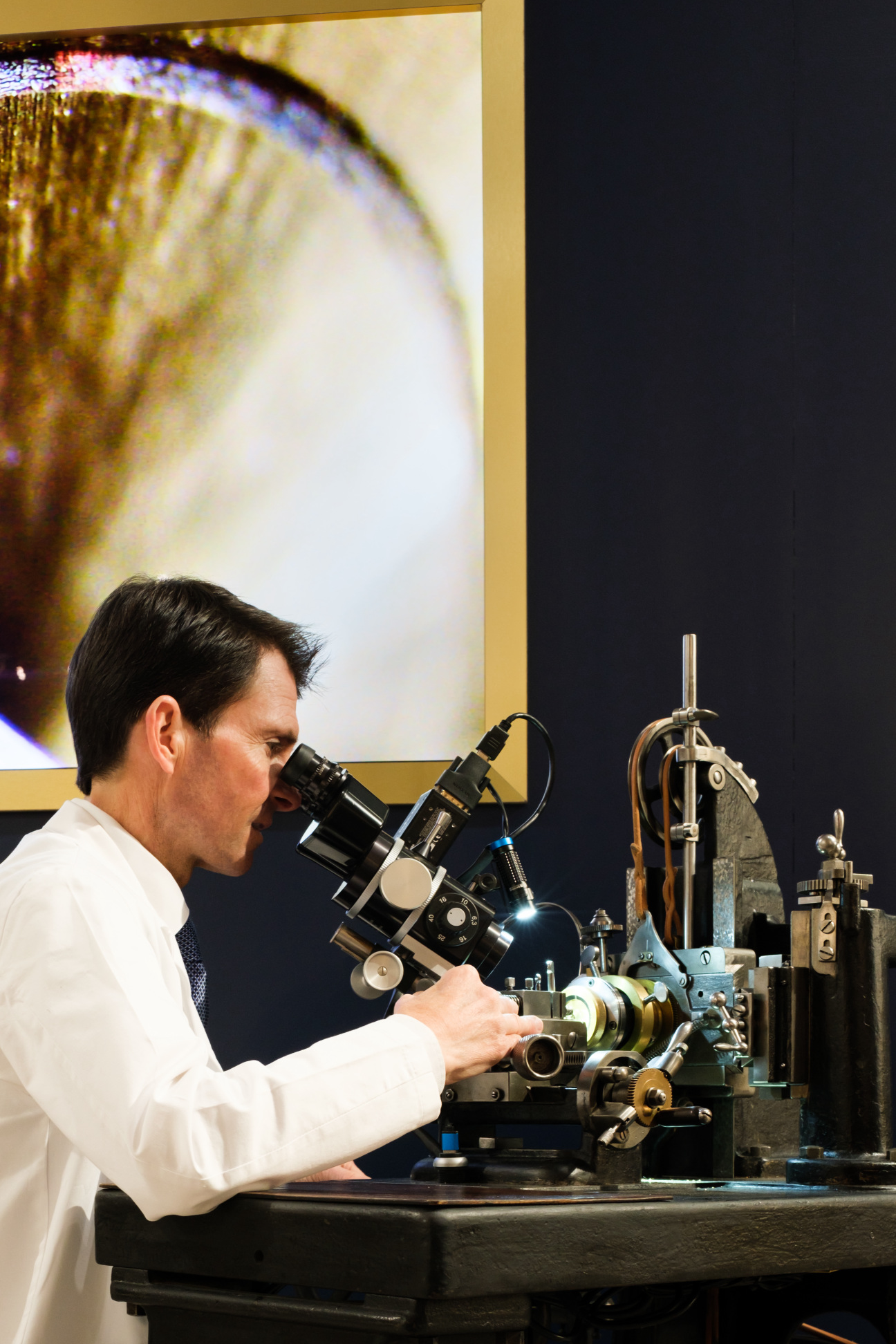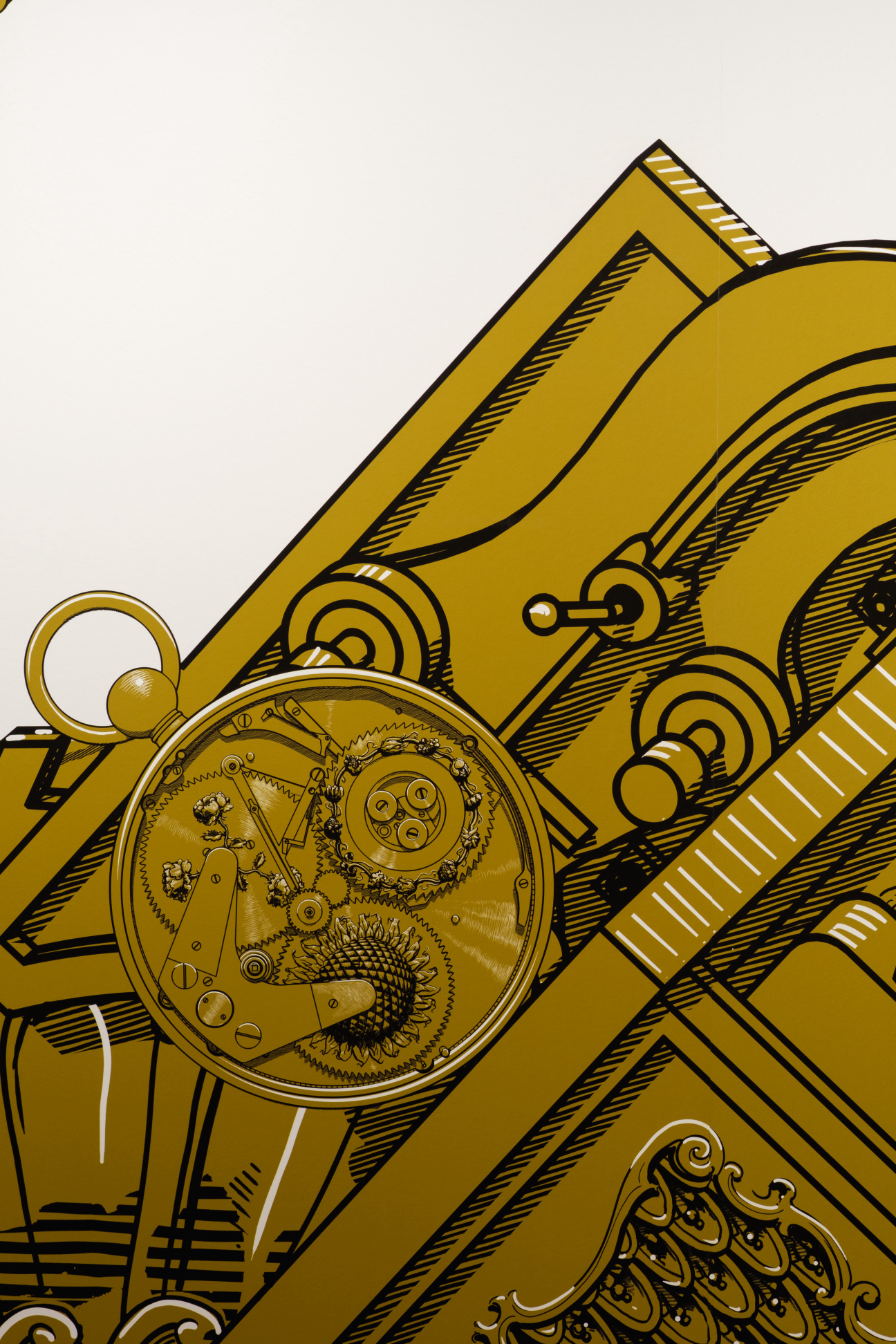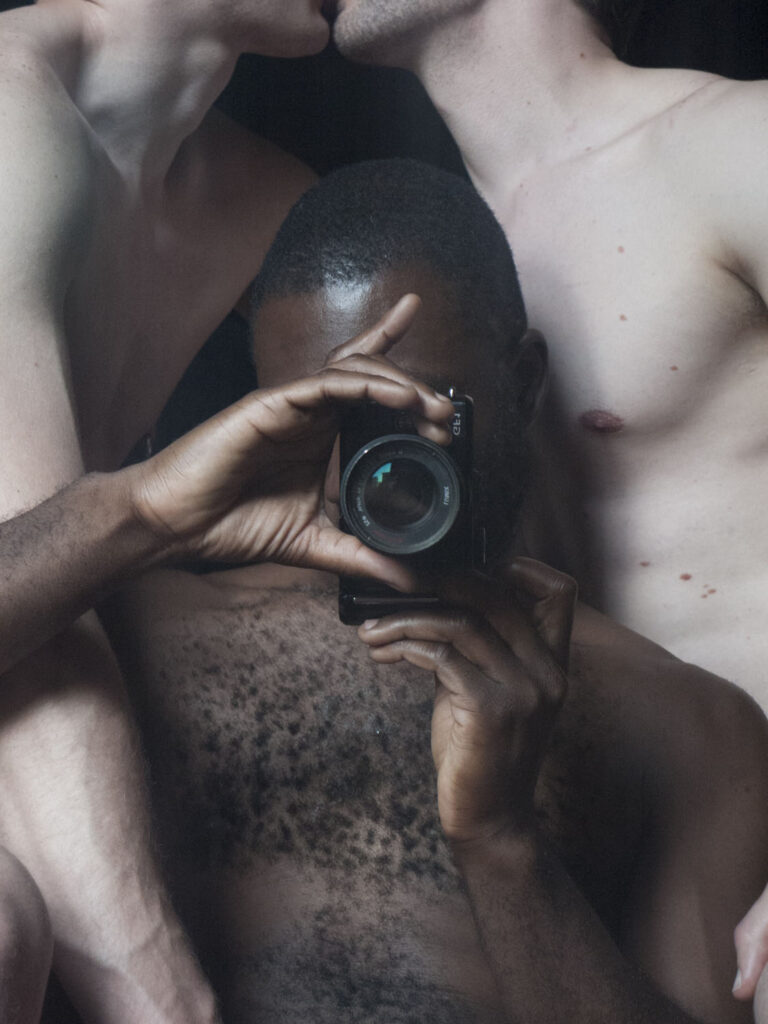
Breguet’s origin story is almost as fantastical as the inventions it produced along the way. It starts with Abraham-Louis Breguet, the forefather of the modern wristwatch, who not only captured the attention of Marie Antoinette and the entire French court–but lit up centuries for watchmakers, engineers, and admirers alike with his visionary approach. This illustrious history is embedded in each of the hand-assembled and decorated timepieces that Breguet produces. You can see it flash in details, like the secret signature always embedded on the face, or in the heart of the piece where one finds components like the tourbillon, a complicated invention by Breguet that freed the pocket watch from gravity’s clutches. Each component has a story, and the watch case becomes a neat container for them all. For those who know, a Breguet is not only a timepiece but a time machine.

The person that opened my eyes to this brilliant artist was Pablo Bronstein, whose idiosyncratic hand has been on my radar for years. Two years ago, when the Argentine artist popped up at the Soane Museum in London, I found myself sneaking off my Frieze itinerary to make a pilgrimage. Bronstein is not a comic, but—like my favorite funny people–his work makes me feel closer to the truth no matter how absurd it gets. The artist is good at finding the essential, even inside of patiche’s ornamental embrace. In this way, maybe he shares something in common with Breguet–a man who doubled down on luxurious aesthetics but not at the cost of precision.

For the last three editions of Frieze, the artist has produced a unique wallpaper for the brand’s lounge–contextualizing their timepieces within a room-sized landscape. A rare opportunity to blow up his baroque drawings to life-size proportions, Bronstein embraced the parameters of the art fair by leaning into a minimalist and graphic palette (gold and black), which established a sense of continuity across the different locations but also distinguished the lounge from the visual cacophony of the close by booths. Perhaps surprisingly, Bronstein’s Los Angeles chapter is the most pared back of them all. The wallpaper forms a post-apocalyptic moonscape littered with the machine parts of a species bygone. “It is a reminder that everything exists temporarily,” Bronstein explains. It is also a winking nod to the temporality of the art fair and the way it contrasts against the technologies inside a Breguet.

Zooming out, its enlightening to think about permeance and time in Los Angeles, a city that collapsed all of human history to its advantage and yet constantly cannibalizes its own. “LA is a place where the history of ornament from all over the world gets recycled and reinterpreted as set design for movies and television,” the artist says.” For a hundred years, most people's images of 18th century France come through Hollywood versions of it. LA media industries have not only created, but also preserved ornament and decoration. A Hitchcock movie interior from the 1950s is still fresh, whereas there are practically no interiors in the physical world that are untouched from the ‘50s.” I think about the fancifulness of the Reine de Naples style with its baroque melting numerals and egg shape. It was fthe irst ever women’s watch, created for Napolean’s sister, and continues to be the most popular style for women. The idea is still fresh, preserved within the ageless materials.










 in your life?
in your life?

